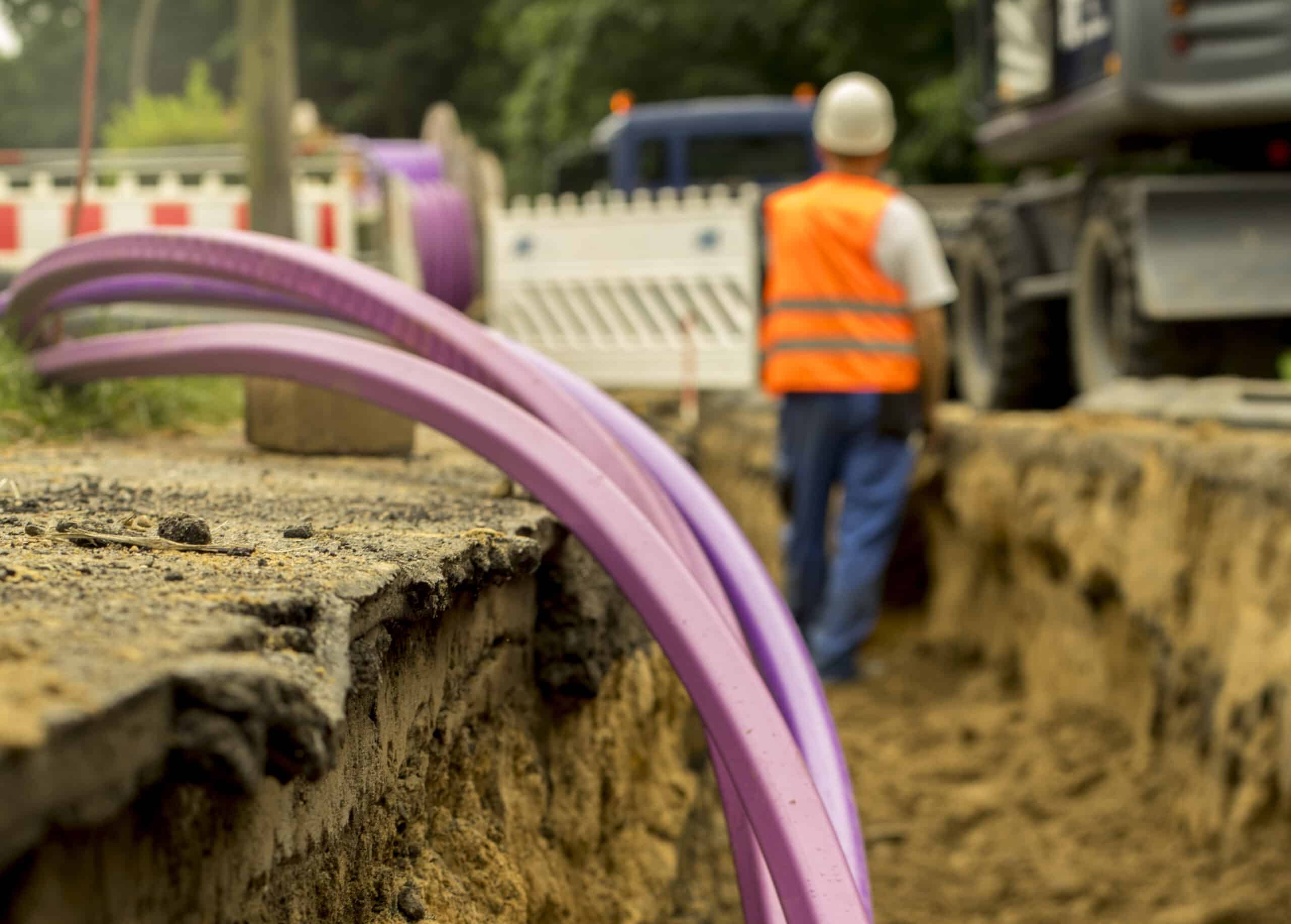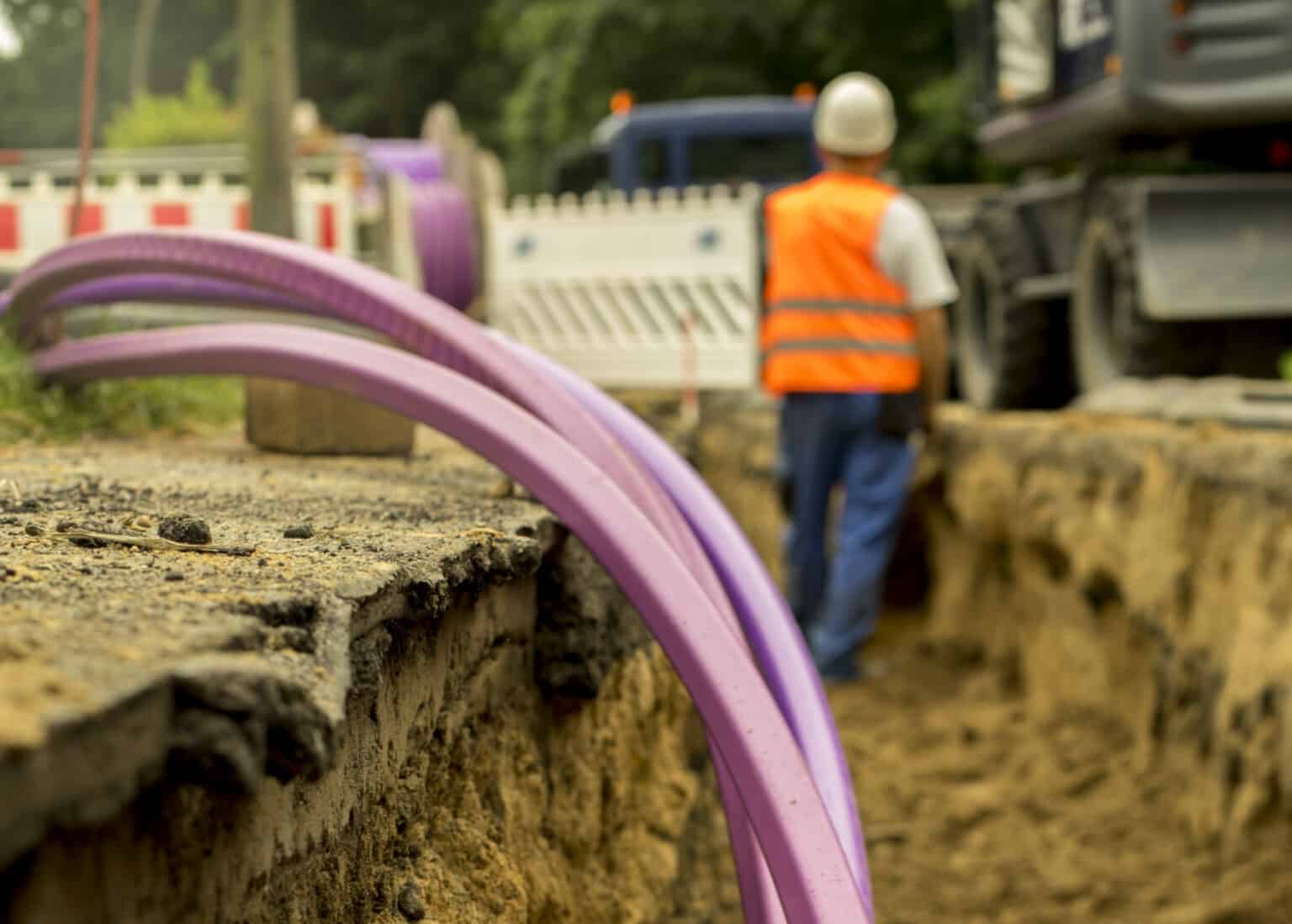While many communities have used fiber optic cables to connect traffic signals and sites, more and more are leveraging their municipal fiber networks to become a robust asset for their community.
While some communities focus on attracting retail communication services, others are focusing on creating municipal fiber networks to help them become more resilient for upcoming technical and societal changes. Municipal fiber networks can help a community provide their constituents with options for high-speed broadband internet service.
The following are some of the top ways that municipal fiber networks can help communities with resiliency:
1. Rebounding from Severe Weather
As severe weather events become more frequent and damaging, communities’ ability to rebound faster could depend on more reliable communication networks. Often during and immediately after a severe storm or natural disaster, communication systems fail. Without cell phone networks working, recovery can be drastically hampered. A municipal fiber network can help keep crucial communication lines open.
2. Stimulate & Attract New Businesses
According to the Fiber to the Home Council, evidence is growing that shows businesses tend to stay in areas with fiber connectivity. In addition, fiber connectivity helps businesses grow and become more productive. Communities with robust municipal fiber networks have a better chance of attracting new businesses, especially in high-tech industries.
3. Attract + Retain Residents
Attracting and retaining new residents is a goal for many communities. When competing with neighboring communities to attract new residents, high-speed internet access can become a major differentiator. Allowing residents options for high-speed internet is an attractive option for someone to be able to work from home, especially as more employers start operating out of “cloud” based networks. Residents with telecommuting options can also help keep the local economy moving in the event of severe weather. Whether it’s a major snowstorm, flood, or fire, if roadways are blocked and people can’t get to work, productivity and the economy can come to a halt.

Fiber-connected homes can also aid current residents that are looking to sell. Recent studies by the Fiber to the Home Council have shown that homes with gigabit-speed internet (1,000 Mbps) have a transaction price of 7.1% more than similar homes where 25 Mbps or less is available. For Millennials, who make up 43% of all smart home product users according to the National Association of Realtors, internet provider access can be the deciding factor when assessing a home.
Millennials are also a driving force in using “Doctor on Demand” applications from their mobile devices instead of going to physically see a doctor. In addition, high-speed internet-enabled health care options can help reduce citizens’ healthcare costs and allow chronically ill patients to live more independently. As healthcare technology advances, patients can provide their doctors with real-time data remotely instead of making an office visit. People that previously needed daily visits from nurses and practitioners can save costs by using broadband-enabled devices. Some of these people that would have had to move to an assisted living facility may now be able to stay living in their current communities.
Another major component to attracting and retaining residents is education. A community with a poor education system may lose residents looking for better opportunities for themselves and their children. Students in fiber-connected schools have access to more information and new methods of learning.
4. Lower Dependency on Large Incumbent Communication Companies
Having your community depend on incumbent technology providers can leave you feeling helpless if they are not willing to invest in broadband technology. Many rural areas are having a challenging time in getting large incumbent communication companies to invest in high-speed broadband. People in these areas feel neglected and may want or need to move to an area that provides high-speed internet access. Municipal fiber networks can help a community take control and lower its dependency on communication providers.
5. Adapt to technology changes and demands
Since optical fiber is the basis of the world’s communications networks, its extreme capacity can support today’s broadband needs and those in the future. Positioning your community for the future demands of technology could be crucial to staying resilient to these changes. Demands for faster bandwidth will only exponentially grow as we transform into smart cities, adapt for autonomous vehicles, and continue to see advancements into the multitude of “internet of things” (IoT).
As communities plan for the future, more and more focus needs to be on resiliency. Resiliency from weather, technology changes, citizen needs, businesses attraction and retention, and dependency on private companies providing much-needed services such as high-speed internet. Quick recovery from misfortune or change could be crucial for the long-term survivability of a community. As people and businesses rely more and more on the internet of things, downloading applications, streaming content, and working in virtual environments, the crucial nature of high-speed broadband services is paramount for a community. Creating municipal fiber networks should be evaluated to help communities become more resilient to the always evolving technical and societal changes.
Learn more about HR Green’s Community Fiber services >>
HR Green helps communities prepare for the future by developing a strong communications infrastructure. Examples of our work can be found here:
- The Push for Community Fiber and Broadband
- Is Additional Broadband Capacity Needed in Your Community?
- Learn from the Pros — Broadband Technology in Colorado
- Creating a Municipal Broadband Network in Colorado Communities
- Leveraging Broadband Infrastructure to Enhance Municipal Services
- Creating a Municipal Broadband Network in Your Community



